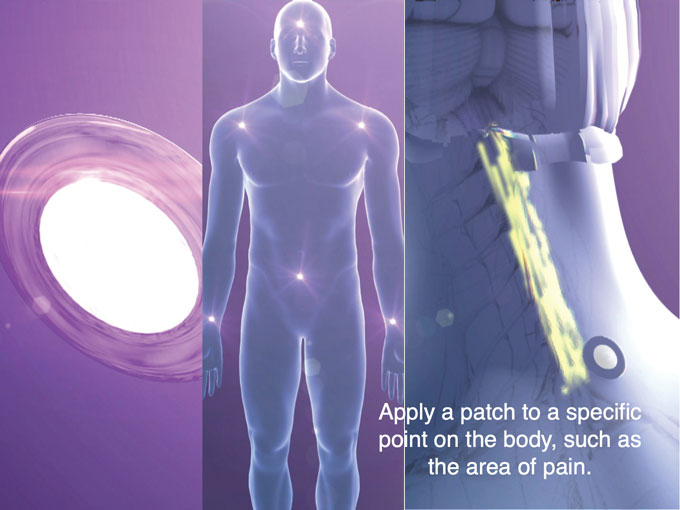If you’re struggling with getting a good night’s sleep, you might want to consider trying out infrared light therapy. This innovative treatment has been gaining attention for its potential to improve sleep quality. Research suggests that exposure to infrared light can help regulate circadian rhythms, promote relaxation, and reduce symptoms of insomnia. In this article, we will explore the connection between infrared light therapy and sleep quality, shedding light on how this non-invasive therapy can potentially enhance your sleep experience.
What is Infrared Light Therapy?
Definition of Infrared Light Therapy
Infrared light therapy, also known as photobiomodulation therapy (PBMT), is a non-invasive treatment that utilizes specific wavelengths of light to promote various health benefits. Infrared light, which falls within the invisible electromagnetic spectrum, penetrates deep into the tissues of the body, delivering therapeutic effects at the cellular level. This type of therapy has gained popularity in recent years due to its potential to enhance sleep quality and overall well-being.
How Does Infrared Light Therapy Work?
Infrared light therapy works by stimulating the mitochondria, the powerhouse of cells, to increase energy production. The infrared light activates certain cellular processes, promoting the release of nitric oxide and triggering a cascade of beneficial effects. This process helps to improve blood circulation, reduce inflammation, and enhance cellular repair and regeneration. When it comes to sleep quality, infrared light therapy can positively impact the regulation of circadian rhythm, melatonin production, and alleviate insomnia symptoms.
Understanding Sleep Quality
Definition of Sleep Quality
Sleep quality refers to the overall effectiveness and satisfaction derived from a night’s sleep. It encompasses various aspects, including the ability to fall asleep quickly, stay asleep throughout the night, and wake up feeling refreshed and rejuvenated. Factors such as sleep duration, sleep architecture, and the absence of disruptions or disturbances play a crucial role in determining sleep quality.
Factors Affecting Sleep Quality
Several factors can influence sleep quality. These include environmental factors such as noise, light, and temperature, as well as lifestyle factors like stress levels, caffeine intake, and physical activity. Additionally, medical conditions such as sleep disorders, chronic pain, and mental health issues can also impact sleep quality. Understanding these factors is essential when considering the potential benefits of infrared light therapy on sleep quality.
Benefits of Infrared Light Therapy on Sleep Quality
Improved Circadian Rhythm Regulation
One of the key benefits of infrared light therapy on sleep quality is its ability to regulate the circadian rhythm. The circadian rhythm is the internal biological clock that regulates the sleep-wake cycle. Exposure to infrared light in the evening can help synchronize the rhythm, promoting a natural sleep-wake cycle and ensuring proper timing of sleep. By enhancing the regulation of the circadian rhythm, infrared light therapy can contribute to improved sleep quality.
Enhanced Melatonin Production
Melatonin, often referred to as the sleep hormone, is responsible for regulating the sleep-wake cycle. Infrared light therapy has been shown to increase melatonin production in the body, leading to better sleep quality. By enhancing the natural production of melatonin, this therapy can help individuals fall asleep more quickly and experience deeper, more restorative sleep throughout the night.
Reduced Insomnia Symptoms
Insomnia, a common sleep disorder characterized by difficulty falling asleep or staying asleep, can significantly impact sleep quality. Studies have indicated that infrared light therapy can be an effective complementary treatment for insomnia. By addressing the underlying causes of insomnia, such as stress and circadian rhythm disturbances, infrared light therapy can help alleviate symptoms and promote better sleep quality.
Scientific Studies on Infrared Light Therapy and Sleep Quality
Study 1: Effects of Infrared Light Therapy on Sleep Disturbances
A study published in the Journal of Clinical Sleep Medicine investigated the effects of infrared light therapy on sleep disturbances in individuals with sleep disorders. The research found that regular infrared light therapy sessions led to a significant reduction in sleep disturbances, including prolonged sleep latency and frequent awakenings. The study concluded that infrared light therapy can be a valuable intervention for improving sleep quality in individuals with sleep disorders.
Study 2: Infrared Light Therapy and Sleep Efficiency
Another study conducted by researchers from the University of Cambridge explored the effects of infrared light therapy on sleep efficiency. Sleep efficiency refers to the percentage of time spent asleep compared to the total time spent in bed. The study involved participants with poor sleep efficiency and found that regular infrared light therapy sessions significantly improved sleep efficiency. This suggests that infrared light therapy can enhance the overall quality of sleep by increasing the amount of time spent in deep and restorative sleep stages.
Study 3: Infrared Light Therapy as a Complementary Treatment for Insomnia
A randomized controlled trial published in the journal Sleep Medicine investigated the efficacy of infrared light therapy as a complementary treatment for insomnia. The study involved participants with chronic insomnia and found that those who received infrared light therapy in addition to standard treatment experienced significant improvements in sleep quality, sleep onset latency, and total sleep time. The study concluded that infrared light therapy can be a valuable adjunctive therapy for individuals with insomnia.
Choosing the Right Infrared Light Therapy Device for Sleep Quality
Considerations for Purchasing an Infrared Light Therapy Device
When selecting an infrared light therapy device for improving sleep quality, there are several factors to consider. Firstly, ensure that the device emits the appropriate wavelength of light, typically in the range of 600 to 1000 nanometers. Additionally, consider the power output and coverage area of the device, as well as any additional features such as timers or adjustable intensity levels. It’s also essential to choose a device from a reputable manufacturer and consult with a healthcare professional if needed.
Different Types of Infrared Light Therapy Devices
There are various types of infrared light therapy devices available on the market. These include handheld devices, light panels or panels, and full-body infrared light therapy systems. Handheld devices are portable and versatile, allowing for targeted treatment of specific areas. Light panels or panels can be placed near the bed or incorporated into a relaxation space, providing a broader coverage area. Full-body infrared light therapy systems feature large panels or saunas that envelop the body, delivering comprehensive therapy.
Incorporating Infrared Light Therapy into Your Sleep Routine
Setting a Consistent Schedule
To maximize the effectiveness of infrared light therapy on sleep quality, it is important to establish a consistent schedule. Consistency helps regulate the circadian rhythm and promotes optimal sleep-wake patterns. Designate a specific time of day, preferably in the evening, to incorporate infrared light therapy into your sleep routine. This regularity will help signal to your body that it’s time to wind down and prepare for a restful night’s sleep.
Determining the Optimal Treatment Duration
The optimal treatment duration for infrared light therapy can vary depending on individual needs and device specifications. While some devices recommend shorter treatment times of around 10 to 15 minutes, others may suggest longer sessions of 30 minutes or more. It is crucial to follow the manufacturer’s guidelines and consult with a healthcare professional if uncertain about the appropriate duration for your specific condition.
Positioning and Safety Precautions
When using an infrared light therapy device for sleep quality, positioning and safety precautions are crucial. Ensure that the device is positioned at an appropriate distance and angle, as specified by the manufacturer. Avoid looking directly into the light source to minimize eye strain and potential damage. It’s also essential to adhere to any safety guidelines provided by the manufacturer to ensure safe and effective use of the device.
Common Misconceptions about Infrared Light Therapy and Sleep Quality
Misconception 1: Infrared Light Therapy is a Cure-All for Sleep Issues
While infrared light therapy has shown promising results in improving sleep quality, it is not a cure-all for sleep issues. Sleep quality is influenced by various factors, and addressing the underlying causes of sleep disturbances is essential. Infrared light therapy should be seen as a complementary approach that can enhance sleep quality when used in conjunction with a comprehensive sleep routine and healthy sleep habits.
Misconception 2: Infrared Light Therapy Only Benefits Sleep Quality
Although infrared light therapy is well-known for its positive effects on sleep quality, it offers a range of additional health benefits. This therapy has been shown to promote wound healing, reduce pain and inflammation, improve skin health, and enhance muscle recovery. Therefore, while sleep quality is a significant benefit of infrared light therapy, it is not the only advantage that can be gained from this treatment.
Misconception 3: Infrared Light Therapy is Harmful to the Eyes
There is a common misconception that infrared light therapy is harmful to the eyes. However, when used according to the manufacturer’s guidelines, infrared light therapy is generally safe for ocular health. It is important to avoid looking directly into the light source and to follow any safety instructions provided with the device. As with any therapy, it is advisable to consult with a healthcare professional if you have any concerns or preexisting eye conditions.
Potential Side Effects and Risks of Infrared Light Therapy
Eye Strain and Dryness
Extended exposure to bright light sources, including infrared light therapy devices, can cause eye strain and dryness. To minimize the risk of eye discomfort, it is crucial to follow the manufacturer’s guidelines and avoid looking directly into the light source. If you experience any eye-related symptoms during or after treatment, such as redness, irritation, or dryness, discontinue use and consult with an eye care professional.
Skin Sensitivity and Burns
Some individuals may experience skin sensitivity or burns as a result of prolonged or improper use of infrared light therapy devices. To reduce the risk of skin-related side effects, start with shorter treatment durations and gradually increase as tolerated. Monitor the skin during and after treatment for any signs of redness, irritation, or burns. If any adverse skin reactions occur, discontinue use and seek medical advice.
Interaction with Medications
Infrared light therapy may interact with certain medications, leading to potential complications. It is essential to consult with a healthcare professional, particularly if you are taking medications that can increase light sensitivity or have specific contraindications. A healthcare professional can provide guidance on the appropriate use of infrared light therapy alongside medication and ensure there are no potential risks or adverse interactions.
Tips for Maximizing the Benefits of Infrared Light Therapy on Sleep Quality
Create a Relaxing Environment
Incorporating infrared light therapy into a relaxing environment can enhance its benefits on sleep quality. Create a calming space by dimming the lights, playing soothing music, and removing any distractions. Consider using aromatherapy or other relaxation techniques to further promote a peaceful atmosphere. By establishing a serene setting, you can maximize the potential for high-quality sleep when combined with infrared light therapy.
Combine with Other Sleep-Enhancing Techniques
Infrared light therapy can be even more effective when combined with other sleep-enhancing techniques. Consider incorporating mindfulness meditation, gentle stretching exercises, or relaxation techniques into your sleep routine. Avoiding electronic devices and stimulating activities shortly before bedtime can also promote better sleep quality. By combining infrared light therapy with other sleep-enhancing practices, you can create a holistic approach to improving your sleep.
Conclusion
Infrared light therapy has emerged as a promising non-invasive treatment for improving sleep quality. By positively influencing circadian rhythm regulation, enhancing melatonin production, and reducing insomnia symptoms, infrared light therapy offers potential benefits for individuals seeking a better night’s sleep. However, it is important to choose the right device, follow safety guidelines, and maintain a consistent sleep routine to maximize the effectiveness of this therapy. With proper usage and considerations, infrared light therapy can be a valuable tool in promoting restful, rejuvenating sleep and overall well-being.





